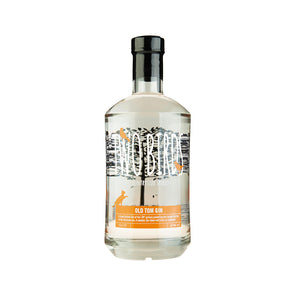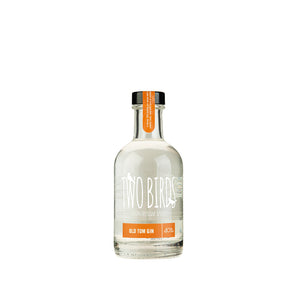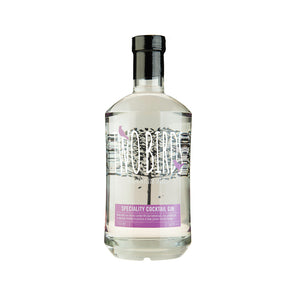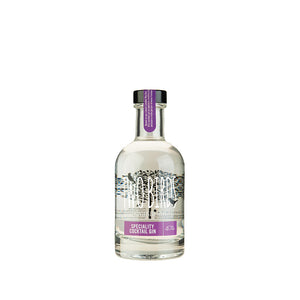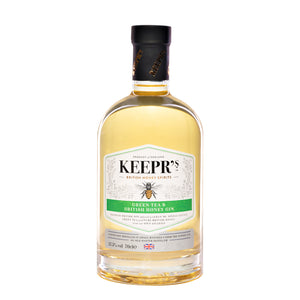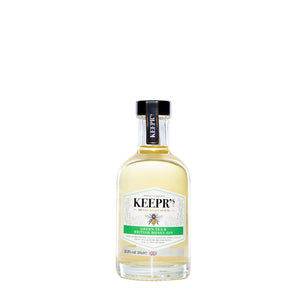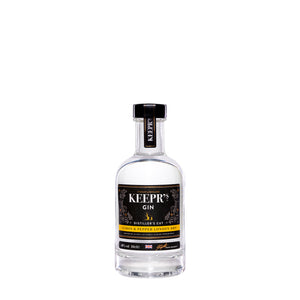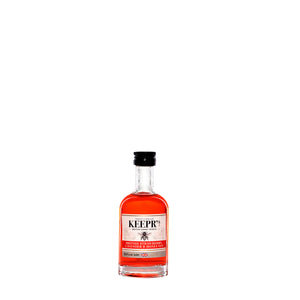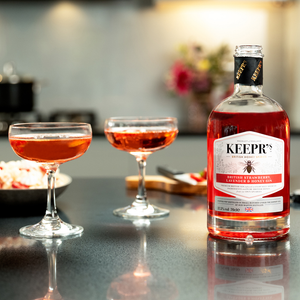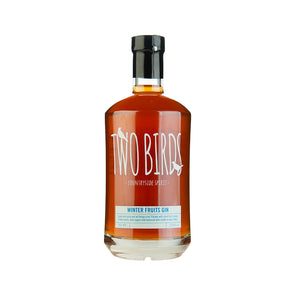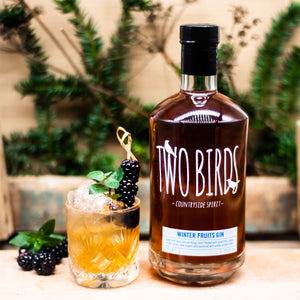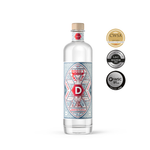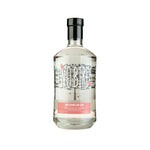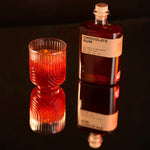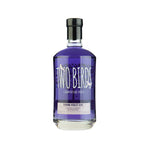You have no items in your shopping cart.
Black Friday deals coming soon! Sign up to our mailing list for updates
All Products, Gin
£14.00
£9.00
TWO BIRDS OLD TOM GIN 40% VOL Old Tom Gin offers a sweeter alternative to our London Dry Gin, but with the same refreshing notes of juniper. Enjoy yours with...
All Products, Gin
From £14.00 To £34.00
From £12.50 To £27.50
TWO BIRDS SPECIALITY COCKTAIL GIN 40% VOL Similar to our London Dry Gin, our Speciality Cocktail Gin is carefully distilled to offer an even stronger juniper flavour. As you might...
All Products, Featured Products
From £5.00 To £35.00
From £3.00 To £20.00
GREEN TEA & BRITISH HONEY GIN 37.5%VOL Our Extra London Dry Gin has been carefully infused with rare Chinese single estate green tea from Ban’Mu and 100% British honey. This...
All Products, Gin
£15.00
£12.50
LEMON & PEPPER LONDON DRY GIN – DISTILLER’S CUT 40%VOL A quintessentially British gin distilled with unique and rare peppercorns from the Far East.Juniper, Coriander, Cardamom, dried and fresh lemons...
All Products, Gin
£5.00
£3.50
BRITISH STRAWBERRY, LAVENDER & HONEY GIN 37.5%VOL Our Classic London Dry Gin has been carefully distilled with only the finest botanicals to create a superb infusion with delicious British strawberries,...
1606, All Products
£20.00
£12.50
1606 PASSION FRUIT LIQUEUR 17% ABV A bartender's favourite for the art of cocktail making Vibrant and tropical, 1606 Passion Fruit Liqueur is a special bartender edition of our classic...
All Products, Gin
£17.00
£14.00
Picture the scene: a roaring fire, great conversation, and a glass of something suitably seasonal. The natural sweetness of our Winter Fruits Gin is balanced by warming spices and subtle...
40%+, All Products
Blending the finest 11-year-old Dalmore single malt with a seductively smooth dry gin, it is sweetly satisfying with mellow sherry undertones. Delicious on its own or with a dash of...
£14.99
Origin of Gin
Our current love of gin, from small batch craft gins to premium flavoured gins, shows no signs of waning. This current trend for gin has had similar incarnations through the ages, where it has undergone many changes according to the wants and needs of the society of the day.
The history of gin can first be traced back to the 11th century when monks and alchemists across Europe used the juniper berry to create a medicinal liqueur. It was the Dutch, however, who first started distilling it as an industry in the 17th century, creating what became the predecessor to Gin, the Genever.
Gin’s name comes from the French for juniper berry, ‘genièvre, which was altered by the Dutch to Genever and by the English to Gin.
The English became so obsessed with gin in the 18th Century, mainly because prices were so low due to the government allowing unlicensed gin production, that this period became known as the ‘Gin Craze’. Regularly and excessively consumed by the poor, gin was blamed for rising crime, higher death rates, madness and many misdemeanours, perfectly illustrated in William Hogarth’s famous Gin Lane painting. The government was forced to pass eight gin acts to bring this drunkenness under control by prohibiting sales to unlicensed merchants and increasing fees.
Fast forward to the Victorian era and although gin was still a much-loved beverage, it was now the drink of respectable society. Glamourous gin palaces sprung up, sparking an explosion in gin cocktail inventions and the arrival of the gin and tonic. Distillers also started to make spirits free from impurities thanks to distilling methods invented at this time, paving the way for a new type of gin, the London Dry.
By the 1950s London Dry gin dominated, but it was in these post-war years that gin consumption declined, with vodka becoming more popular. But just as gin had reinvented itself time and time again, by the turn of the century a change in legislation around distilling in the 2000s, caused a boom in craft distilleries and the subsequent renaissance of gin. Bartenders resurrected forgotten gin cocktail recipes from cocktail books and even the popular 18th Century Old Tom style of gin got a reboot.
Different types of Gin
Gin’s principal flavouring comes from the juniper berry but there are also many different types with their own specific characteristics. There are the Netherland types, like the Genever, which contains malt wine for a rich and robust flavour, and the London Dry where juniper is the dominant flavour and the taste comes from the all-natural flavouring of the botanical ingredients.
The Old Tom is distilled with liquorice, which gives it its slightly sweet taste while the most recent new wave gins appeal to a new generation of gin drinkers with their exploratory flavours and range of botanicals. You’ve also probably heard of sloe gin. This is not a true gin but a sweet liqueur made with sloe berries and popular at Christmas time.
How Gin is made
Traditional gin distillation involves the spirit being diluted with heated water and pumped into the pot still where the botanicals are also added. Vapours rise through the botanical vessel releasing the flavours. The liquid then condenses and passes through multiple plates of the column still to further purify the spirit before it recondenses and drips from the still. The gin is then cut with pure water for different gin strengths.
Other methods of gin distillation include vapour infusion, where the botanicals are suspended above the spirit in a gin basket, or vacuum distillation – a cold distillation technique which allows the botanicals to evaporate and collect as opposed to boiling in a copper pot still.
Gin botanicals
Aside from the piney character of juniper, which is the signature note of any gin, distillers have an extensive collection of botanicals which they use to flavour the neutral base spirit and ensure each individual gin brand has its own unique botanical formula. Some are more commonly used than others, each working in harmony or in contrast with one another to balance the complex flavours. You will often find citrus in many gins, like lemon, which has a zesty and crisp taste on the palate, and coriander seeds which increase the citrus notes. Cassia and cinnamon boost the floral notes for a warming taste while cardamom gives a menthol note for a spicy flavour. Honey adds a wonderfully delicate natural sweetness to gin for a silky, sweet finish, complementing the herbal or floral notes of the botanicals.
How to drink Gin: Gin cocktails and garnishes
For most people, gin is best enjoyed as a simple gin and tonic made with the mixer and garnish of your choice. London Dry gins lend themselves to this type of serve, which is most commonly garnished with a slice or wedge of lime. Aside from lime, garnishes can include a slice of ginger, black peppercorns, orange peel, rosemary, cucumber, mint, chillies – the list is endless! When drinking a gin and tonic it’s also important to chill the mixer otherwise the drink will taste sweeter and less fizzy. As well as tonics, try adding soda waters to your gin, for those who prefer a less quinine taste.
The London Dry is also suited to being combined with other ingredients in classic gin cocktails like the Martini (four parts gin and one part vermouth) and the Gimlet (gin and lime juice) or in long drinks like a Tom Collins, which started out as a hangover cure in the 1800s which its mix of gin, lemon juice and soda.
The Genever style of gin, due to its richness, makes an excellent base for an Old Fashioned (gin muddled with sugars and bitters) cocktail while the Old Tom with its sweetness is perfect for a Martinez, known as a forerunner to the Martini.
Popular gin cocktails also include the Negroni, an Italian cocktail made with equal parts gin, vermouth and Campari; the Bramble, which first appeared in the 1980s and pairs gin with crème de mure and lemon juice; and the Bees Knees – a Prohibition era cocktail made with gin, lemon juice and honey – which literally means ‘the best’.
Finally, don’t be afraid to drink gin neat. Find a premium gin with flavours you prefer and sip away!

